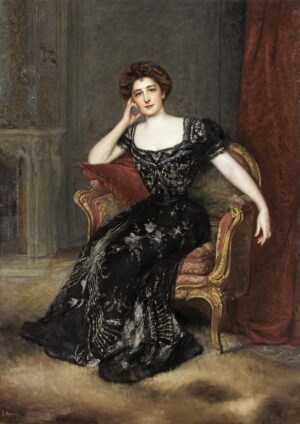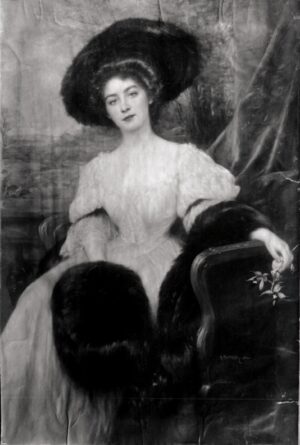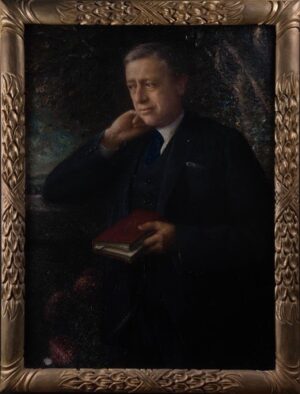
NIXON, Lewis
Description:
Three-quarter length, standing by a table covered in plans.
Location:
Present Whereabouts Unknown.
Exhibition:
M. KNOEDLER & CO., 355, Fifth Avenue, New York, December 21, 1910 – January 3, 1911.
Bibliography:
New York Herald, December 28, 1910
The Globe and Commercial Advertiser, New York, December 29, 1910
New York Evening Mail, December 29, 1910
Brooklyn Daily Eagle, Friday evening, December 30, 1910
New York American, January 2, 1911
The sitter was born in Leesburg, Virginia, April 7, 1861, graduating head of his class in 1882 from the United States Naval Academy. He was sent to the Royal Naval College at Greenwich, England by the Navy Department. He married Sally Lewis Wood on January 29, 1891 (she died 1937) and in 1910 they were living at Madison Avenue and 53rd Street. He married Mary Doran Martin on June 28, 1938, and lived at 18, East 70th Street, New York. He transferred to the Naval Construction Corps in 1884; in 1890 he designed the battleships Oregon, Indiana and Massachusetts, resigning from Navy to become superintending constructor of Cramp Shipyard, Philadelphia. He resigned from this in 1895, starting the Crescent shipyard, Elizabeth, New Jersey on his own account, where he built 100 ships in six years, including submarine torpedo-boat Holland, monitor Florida, and cruiser Chattanooga. He was the proprietor of Lewis Nixon’s Shipyard 1895, and president until 1904. He was involved in Democratic politics. He received special audiences from the King of England, Popes Pius X and XI, the Emperor of Russia, King of the Belgians, Mussolini, and many South American Presidents. He wrote a book called The Canal Tolls and American Shipping which was published in 1914. He died September 23, 1940.
The Brooklyn Daily Eagle, December 30, 1910, reported as follows: ‘The distinguished constructor, Lewis Nixon, is represented at table covered with plans and the likeness to the original is faithful as to the features, although there is a hardness and perhaps unwarranted awkwardness in the placing of the body.’ The New York American, January 2, 1911 was pithier: ‘There is much bad drawing, clumsy and impossible in the portrait of Mr. Nixon.’
A financial statement in the Knoedler Library dated November 4, 1915 (Domestic Letterbook September 1, 1915—November 5, 1915, No. 490), indicates that Knoedlers framed a portrait of Lewis Nixon on April 14, 1913 which cost $41.00. Did Muller-Ury paint a second portrait of Nixon?




